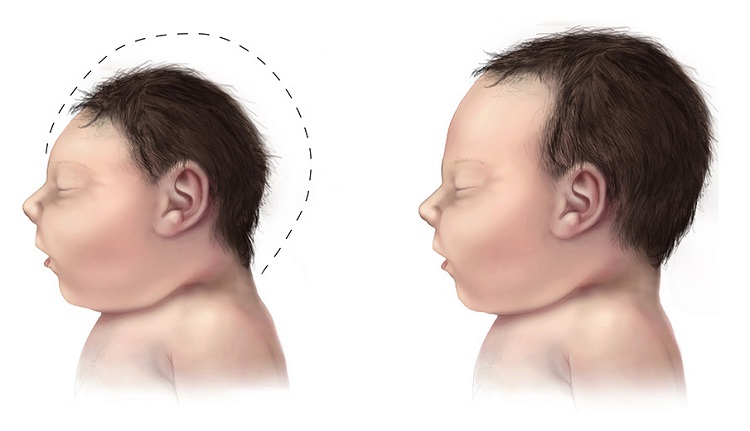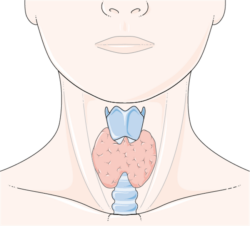Preeclampsia is a serious pregnancy complication that affects 2-6% of all pregnancies in the US and 5-14% worldwide. It is marked by maternal hypertension and protein in the urine, usually presenting after 20 weeks of pregnancy. Despite years of research to identify early maternal markers of preclampsia, no reliable early diagnostics have been developed. Perhaps we are looking in the wrong place.
Preeclampsia research has almost always focused solely on maternal health as the core component of the disease. While it is true that maternal health should be a consideration, as it is severely compromised with preeclampsia, it takes two to make a baby. What about the dad’s contribution to maternal, placental and fetal health during pregnancy? The absence of paternal contributions is curious, especially considering research shows that women with history of preeclampsia who change partners for subsequent pregnancies have a 30% reduction in the risk for preeclampsia. Conversely, women with no history of preeclampsia who change partners for subsequent pregnancies, increase their risk for preeclampsia by 30% – placing the dad’s contribution squarely in focus. Why is dad’s health not considered?
Truth be told, there is a line of research that suggests that a dysregulated maternal immune response to paternal semen causes preeclampsia. A convenient remedy, greater exposure to one’s partner’s semen prior to pregnancy is postulated. Aside from the obvious chuckles with this line of reasoning e.g. that more sex prevents prevents preeclampsia, the deeper problem lay in the fact that this theory is still squarely focused on the mom’s health, or rather, her response to the semen. It takes no consideration of the healthiness of the semen itself.
What if paternal health contributes not only to fetal health (this should be obvious), but also, placental functioning? What if the developing fetus, aided by paternal genetics, controls or contributes to placental health at least as much as the mom does?
In an interesting series of experiments conducted using rodents (here, here), researchers have identified a fetal hormone that reduces, maybe even prevents, the development of preelampsia. Although this doesn’t quite point to paternal health as contributing factor, it is a step in the right direction. That is, we’re finally moving beyond the mom as the sole contributor to a healthy pregnancy.
The hormone thought to protect mom from developing preeclampsia is called adrenomedullin or ADM for short. ADM is peptide hormone synthesized in a myriad of tissues including the heart, lungs, kidneys, the ovaries and testis, uterus and placenta. ADM is a vasodilator, meaning it dilates vasculature so that more blood and nutrients can flow to the tissue or organ. It’s also angiogenic, meaning it ‘grows’ new blood vessels. In normal healthy pregnancies ADM is elevated significantly. In preeclamptic pregnancies, it is not. And this where it becomes interesting.
One of the tell-tale signs of preeclampsia is abnormal vascularization of the placenta. The maternal uterine spiral arteries must remodel and increase capacitance to support the nutrient and oxygen needs of the placenta and growing fetus. When they don’t remodel appropriately or are constricted in some way, placental, fetal and ultimately maternal health are compromised. The theory is, that as the primary recipient of the increased placental blood flow, in normal pregnancies the fetus signals its needs and in some way controls or contributes to uterine and placental artery remodeling and angiogenesis by releasing ADM. Fetal ADM then increases blood flow. This doesn’t appear to happen in preeclamptic pregnancies where ADM levels are diminished and uterine spiral arteries do not remodel appropriately. It is believed that if the fetus does not release sufficient ADM then maternal systems must hyper-compensate resulting in the preeclamptic pregnancy that places great physiological strain on the mom. An interesting caveat though, ADM is increased in non-pregnant, usually male, patients with hypertension so the relationship may not be linear.
ADM interacts with other hormones as well. It enhances progesterone production, suppresses FSH induced estradiol production, and is thought to be involved with inhibiting uterine contractility during pregnancy. In the heart, ADM interacts with testosterone, estradiol and angiotensin-II to modulate heart vessel contractility. Interestingly, it is testosterone that increases ADM in these cells, while estradiol has no direct effect on ADM. Through a complex interplay between estradiol and angiotensin II, however, estradiol can increase ADM (see here for details).
This is cool research and likely to open additional possibilities for preeclampsia treatment. It represents somewhat of a paradigm shift in recognizing the role of fetus, and indirectly the role of the dad in the development of preeclampsia. If taken just bit further, perhaps even more diagnostic and therapeutic opportunities would arise.
This article was published previously on Hormones Matter.















This is a tremendously profound revelation that seems to fall on deaf ears too often. The odd reality is that midwives and women’s health advocates just keep playing by the illogical references waiting for the existing paradigm to shift. We do not need permission to do what is right. Think out of the box and begin talking the truth into existence. Thanks again for writing about it Chandler.